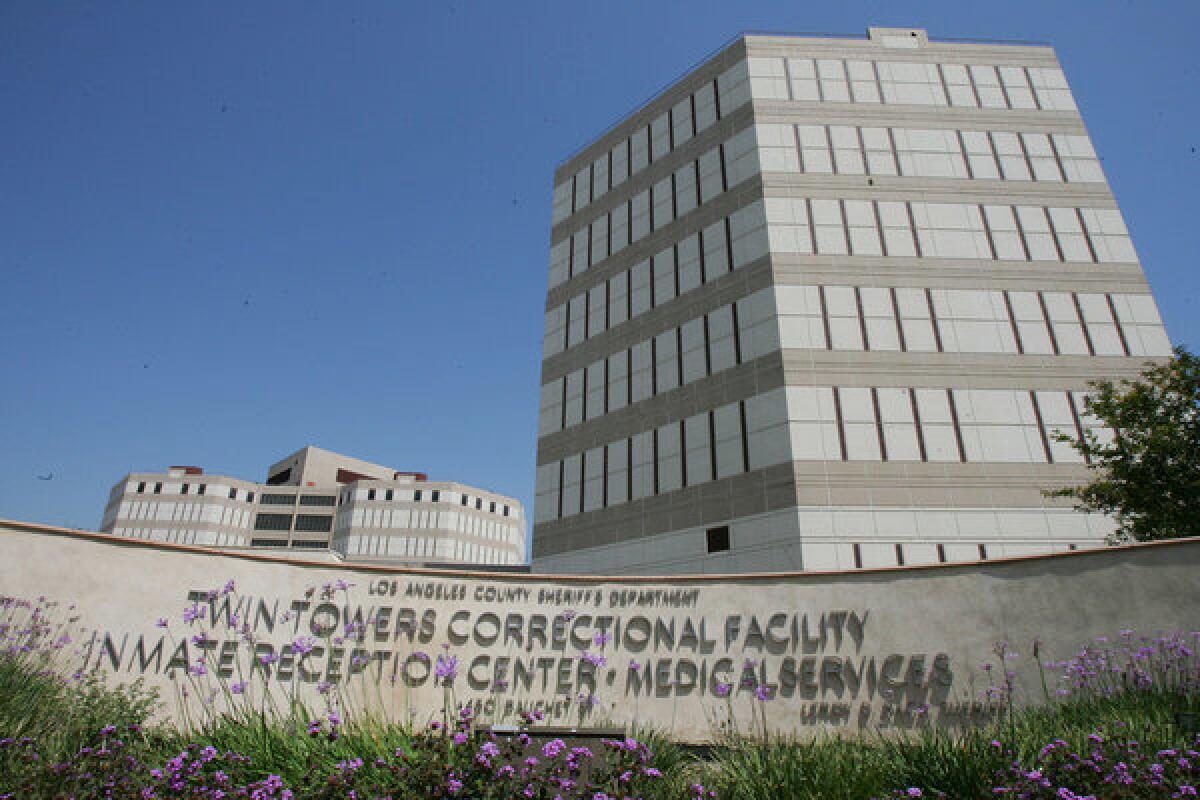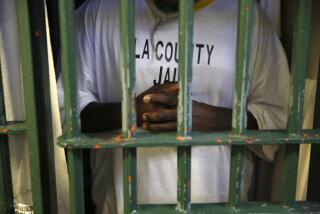Op-Ed: With COVID-19 raging, depopulate Los Angeles County jails

George Gascón took office last week as the new district attorney for Los Angeles County on a strong reform platform, pledging to repair Los Angeles’ broken criminal legal system. With COVID-19 ravaging California’s correctional facilities, Gascón’s success will be a matter of life and death for thousands of people incarcerated in the nation’s largest jail system.
We represent the community organizations Dignity and Power Now and Youth Justice Coalition, along with Black Lives Matter co-founder Patrisse Cullors, in a class-action lawsuit challenging the Los Angeles County jails’ inadequate COVID-19 response. Despite the suit, the county has continued to warehouse incarcerated persons with little regard for public health and safety.
One of the class-action clients is Teresa Gomez. She was arrested in August, and learned she was pregnant shortly after being booked into the jail. In October, she tested positive for COVID-19. After her diagnosis, Gomez was moved to a small, windowless, dirty solitary confinement cell and locked in for 23 hours a day — punitive conditions the Centers for Disease Control and Prevention has warned will deter prisoners from reporting symptoms. A scheduled obstetric wellness exam was canceled because of her COVID-19 status. And her criminal case has come to a standstill; the courts have repeatedly canceled hearings due to COVID risks.
It’s no wonder Gomez got infected. In general, the prisoners in the L.A. County jails are crowded into open dormitories and two-person cells the size of parking spaces. They are sleeping inches from one another and cannot practice social distancing. Officers don’t always wear masks, and prisoners’ masks aren’t replaced regularly.
Since the pandemic began, more than 3,600 prisoners (and 1,400 members of the Sheriff’s Department) have been diagnosed with COVID-19. Nine have died, including two last month.
More infections and deaths are sure to follow. The jail’s population has exploded in the past three months. In the spring, the county was holding about 12,000 prisoners, which is close to the state-rated capacity for the system. As of Friday, the count was 15,400. Close to 4,000 of these men and women have received state prison sentences, but they sit in limbo because the state system, grappling with its own COVID outbreaks, has suspended new admissions.
When Gascón was sworn in on Dec. 7, he committed to a series of actions that could help depopulate the jails and reduce COVID-19 infection. These include ending the practice of charging individuals with low-level offenses associated with mental illness, homelessness and addiction, as well as ending cash bail for people charged with misdemeanors. (Those who can’t pay end up waiting out their court dates in jail.)
More must be done. We know that many of those already in custody can be safely released. For example, a single mother of two children who has been jailed for the past 14 months only because she did not complete the final 100 hours of court-ordered 608 hours of community service. Or another female prisoner who was held for three months on misdemeanor charges and a probation violation. After she contracted COVID-19 in the jail, an officer told her she’d “see her in hell” when she died from the disease.
These women should not have been jailed during a pandemic but rather should be at home, awaiting court dates. As COVID-19 rages, we recommend the immediate release to the furthest extent possible of medically high-risk prisoners and those who were cleared for bail but were too poor to pay for it.
The system should presume release rather than incarceration. Those arrested on non-serious charges can be cited and ordered to appear in court, rather than adding to overcrowded jails. People held on technical violations of the conditions of their probation or parole and those jailed while awaiting bed space in diversion programs or at a state hospital should be released to community-based supervision or restoration programs.
Finally, the county must devise a plan to set the maximum number of people the jails can hold and still allow for effective physical distancing. We believe even the state-rated capacity of 12,404 is too high. On Friday, a Superior Court judge ordered Orange County to reduce its jail population by half to allow for social distancing. In October, the California Court of Appeal ordered San Quentin State Prison to reduce its population by a third. Similar measures must be implemented in the Los Angeles County jails.
These steps will protect not just those who live and work at the jails, but all county residents. The more people who are held in jail, the more infections we will see in the surrounding communities, as prisoners are cycled in and out of jail, and as deputies, staff and others move between home and work. A study published in June showed that 1 in 6 COVID-19 infections in Chicago were directly tied to outbreaks at the Cook County Jail.
It is a pernicious myth that jailing people at the rate the county has for decades makes communities safer. An American Civil Liberties Union analysis over the past six months showed that jail releases spurred by COVID-19 have not resulted in a spike in violent crime. The ongoing refusal to release people during this pandemic stems from long-standing injustices of the criminal legal system. L.A.’s new district attorney has pledged to reform a broken system. Gascón’s work to depopulate the jail will save lives.
Eric Balaban is a senior staff attorney with the ACLU’s National Prison Project. Theresa Zhen is an attorney with the Pasadena firm of Hadsell, Stormer Renick & Dai.
More to Read
A cure for the common opinion
Get thought-provoking perspectives with our weekly newsletter.
You may occasionally receive promotional content from the Los Angeles Times.










